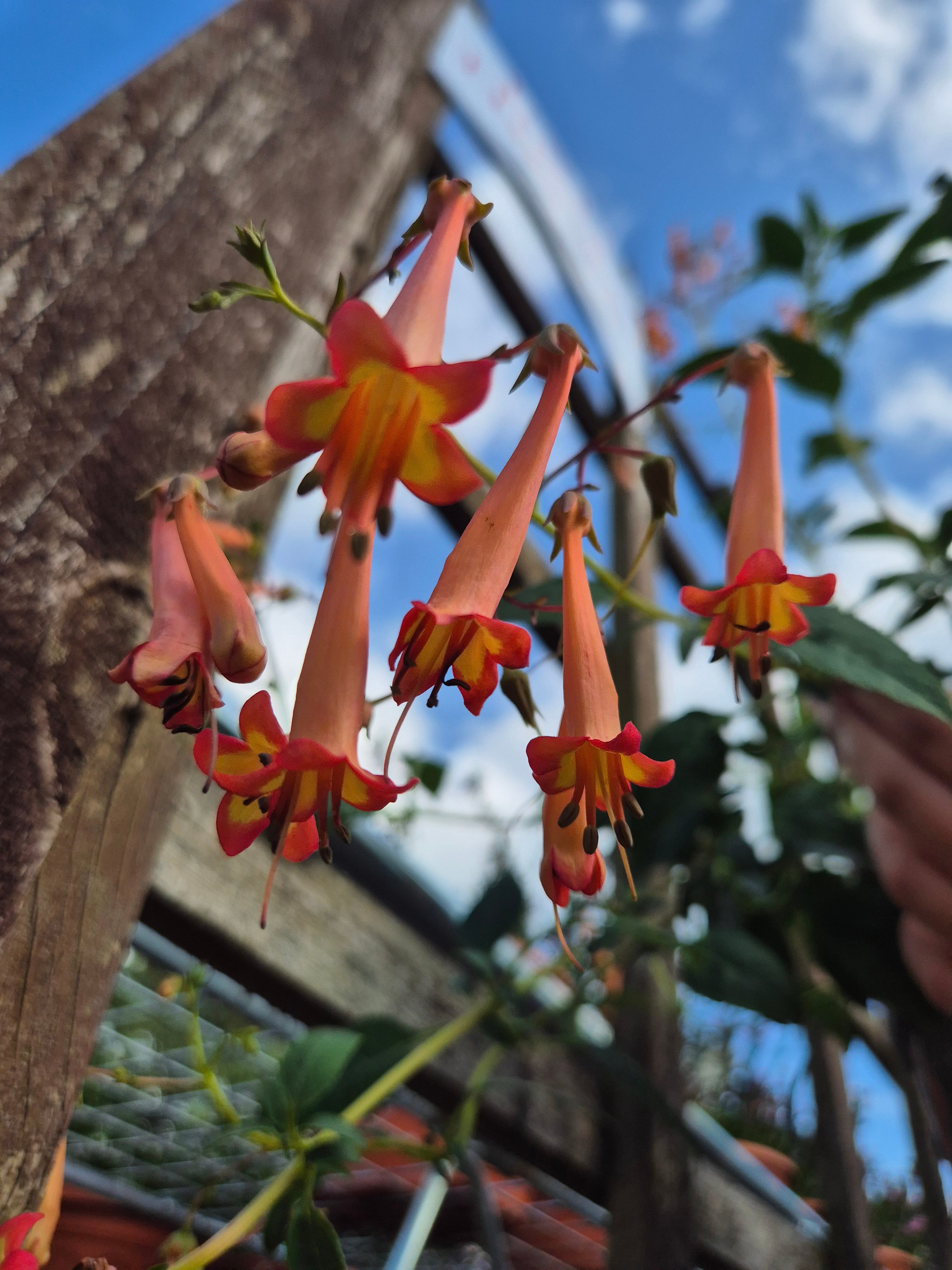Phygelius × rectus 'Jodie Southon'
Cape figwort 'Jodie Southon'
A suckering, semi-evergreen subshrub or woody-based perennial to around 80cm tall with ovate leaves and erect stems in summer and early autumn bearing clusters of pale orange to pink tubular flowers with soft yellow throats
Size
Ultimate height
0.5–1 metresTime to ultimate height
2–5 yearsUltimate spread
0.5–1 metresGrowing conditions
Moisture
Moist but well–drained, Well–drainedpH
Acid, Alkaline, NeutralColour & scent
| Stem | Flower | Foliage | Fruit | |
| Spring | Green | |||
|---|---|---|---|---|
| Summer | Orange Pink Yellow | Green | ||
| Autumn | Orange Pink Yellow | Green | ||
| Winter | Green |
Position
- Full sun
Aspect
South–facing or West–facing
Exposure
Sheltered Hardiness
H5Botanical details
- Family
- Scrophulariaceae
- Native to GB / Ireland
- No
- Foliage
- Semi evergreen
- Habit
- Bushy, Suckering
- Genus
Phygelius are evergreen shrubs, usually grown as herbaceous perennials in cooler areas, with simple, ovate leaves and large panicles of tubular flowers in summer and autumn
- Name status
Unresolved
How to grow
Cultivation
Grow in fertile, moist but well-drained soil in full sun with shelter from cold drying winds and provide a dry winter mulch
Propagation
Propagate by softwood cuttings in late spring. Propagate by removing rooted suckers in spring
Suggested planting locations and garden types
- City and courtyard gardens
- Cottage and informal garden
- Patio and container plants
- Flower borders and beds
- Wall side borders
Pruning
Pruning group 9 or, if grown as a herbaceous perennial, cut back to the base in spring. Deadhead to encourage further flowering
Pests
May be susceptible to figwort weevil and capsid bug
Diseases
May be susceptible to honey fungus (rarely)
Get involved
The Royal Horticultural Society is the UK’s leading gardening charity. We aim to enrich everyone’s life through plants, and make the UK a greener and more beautiful place.
